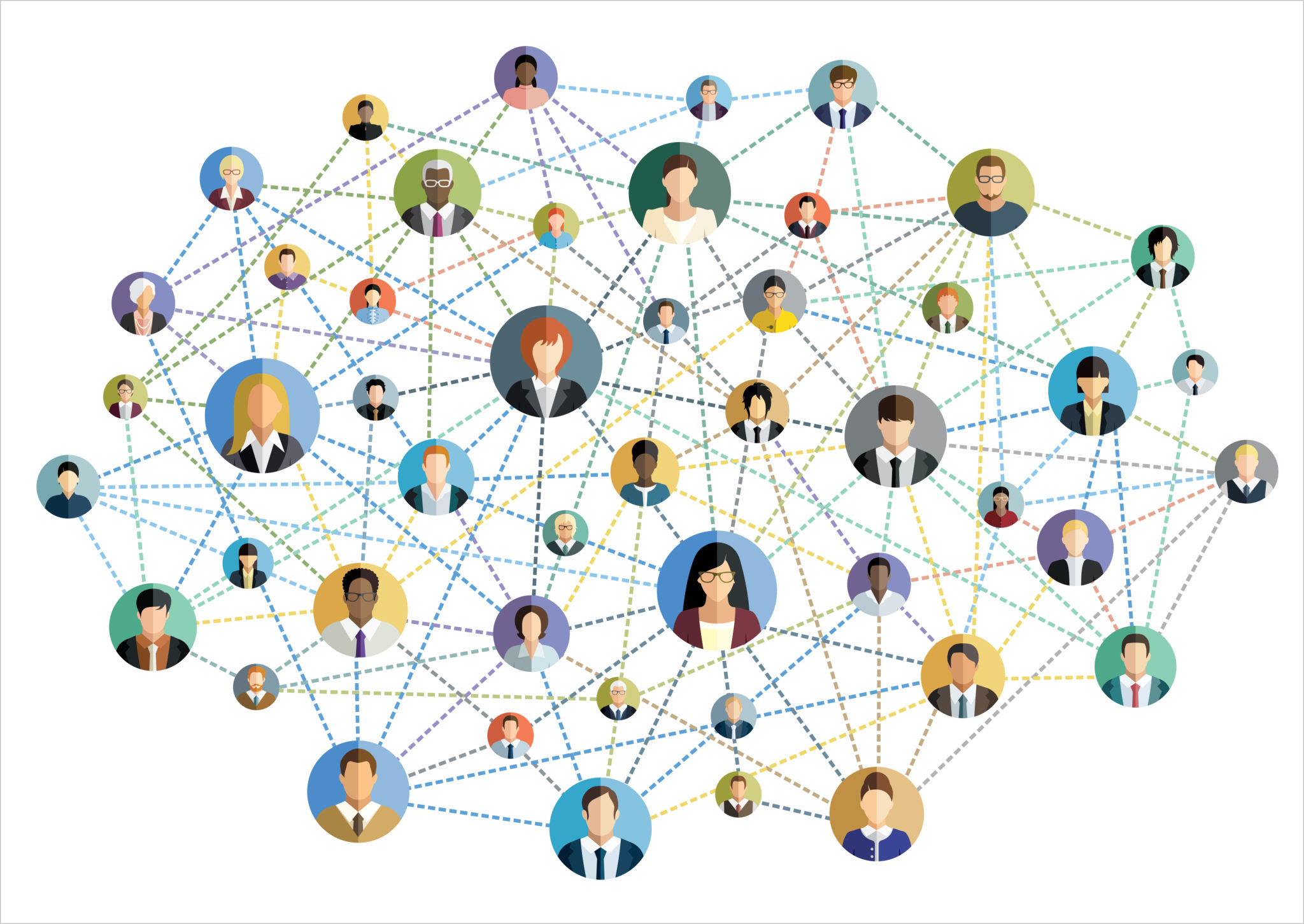Networking has not gone away; rather we’ve reworked our network, moving primarily to virtual connectivity.
If networking is a necessary evil, the Pandemic has highlighted some of the unsuccessful ways we have approached it all along while leading to positive change in how we incorporate virtual into live networking.

Different types of conversations are taking place, sharing the challenges of mixing home schooling with working from home. Creative networking has forged new partnerships across multiple departments and differing industries, pooling resources to inspire innovative ideas and problem solving. Cancellation of events has been the catalyst for increased online networking, staving off feelings of isolation when craving in-office interaction. While under lockdown, our habits have changed and diversified. Users are posting with a purpose, shifting content and voice.
Virtual connectivity can feel daunting with its own challenges and awkwardness. Think about connecting under all circumstances: unlike-minded people, those who have different interests, those not from your field or social circle, etc.
Reach out to authors of articles you ‘liked.’. Let them know what specifically you enjoyed and why. This can lead to dialogue and possible future collaboration. Connect with attendees you might have met at prior events, inviting them to a virtual coffee break or happy hour as a casual way to meet up again. Approach every interaction with the mindset of how you might support them should you need to ask for some assistance.
Partner with institutions where you can share your knowledge and skills, leveraging the network and developing partnerships to facilitate speaking opportunities. Develop a pipeline to recommend topics for further discussion.
In simple terms, you can improve your ability to connect in a pure, authentic way. The real goal of networking is to make a connection: the benefits come later. When you audit your network, you identify who is missing; from there, work out a sensitive way to get in touch. Consider those platforms your clients use like Instagram and Twitter,, but always maintain a professional tone. Remember to follow up on all outreach as a first connections can be enough to make an impact. Korn Ferry Advance stated that “…more than 40% of Americans say their emotional well-being has gotten worse…” Further to that, networking is not about you; it’s about building relationships that aren’t one-way streets.
Business schools and online-hiring sites have been rolling out new tools and tips on how improve your network. Time saved not traveling means you can get more time to work on virtual outreach.
- Columbia organized virtual professional-development workshops on how to re-navigate networking.
- The Wharton School hosts online panels with social media experts to share virtual event best practices.
- LinkedIn allows users to set up and attend virtual events.
- ZipRecruiter posts networking recommendations for research and social-media platforms to organize events.
Networking help identify opportunities beyond collaboration. Remain authentic and sincere, show empathy and be yourself. Do this whether you are approaching a member of your network or are trying to connect with a new contact. It is crucial to convey that you are a team player and a trusted, supportive and caring colleague.
Even if you feel you are experiencing networking fatigue, so too may be those you reach out to. Practice empathy, and communicate and schedule accordingly. Wait patiently for a response as they may simply be behind on their to-do list or slow in responding to a backlog of emails.
And remember, we’ve all been impacted in some way.